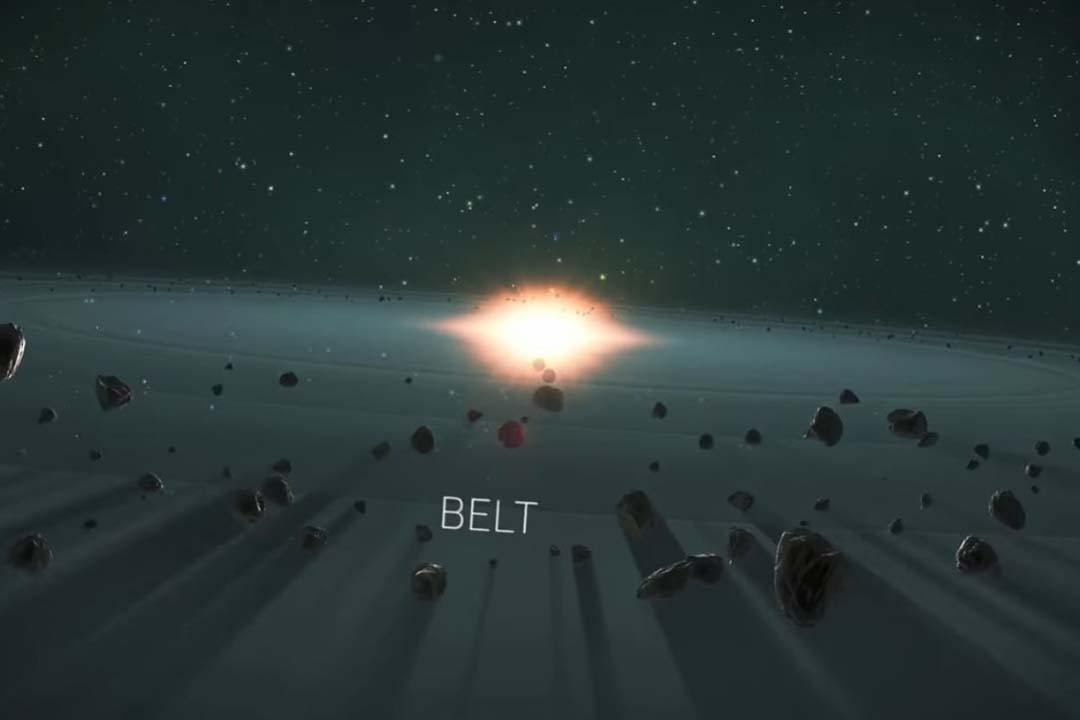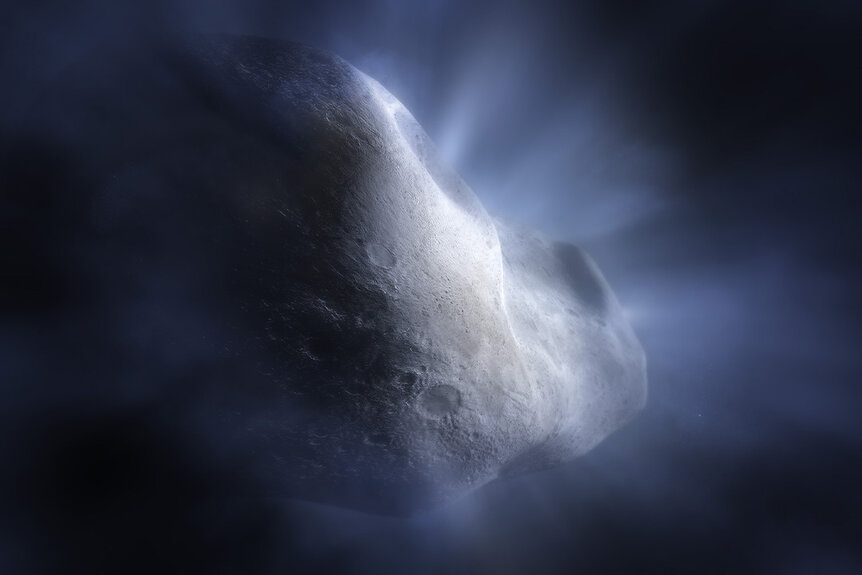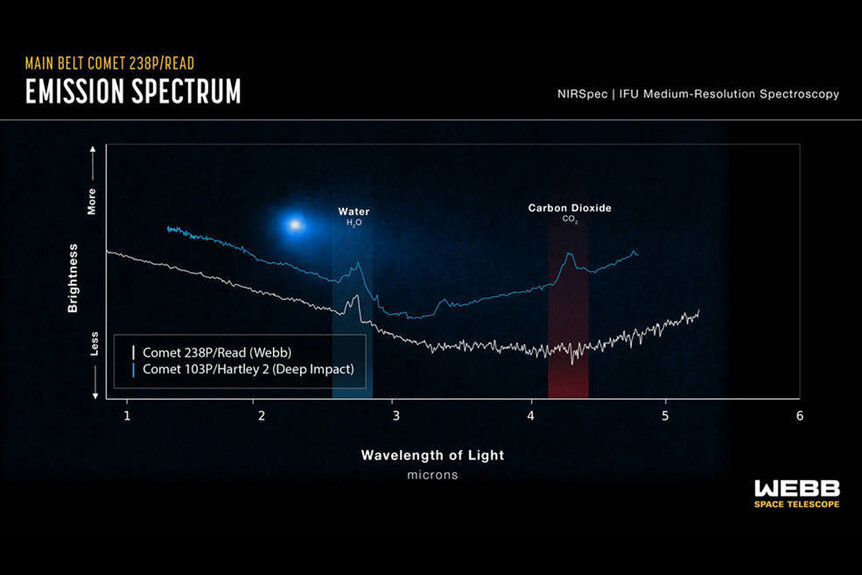Create a free profile to get unlimited access to exclusive videos, sweepstakes, and more!
Bizarre Asteroid Belt Object Could Contain Water From the Birth of the Solar System
Every time we make a category, something comes along to break it.

If you’re looking for longform science fiction which feels rooted in reality, it’s hard to find a better example than The Expanse. The novel series was written by James S. A. Corey, a pseudonym for the storytelling duo Daniel Abraham and Ty Frank, and tells the story of humanity in the process of expanding throughout the solar system. The series follows a number of human factions on Earth, Mars, and living aboard the larger objects in the asteroid belt. The wave of exploration, colonization, and resources exploitation was driven by the development of effective fusion drives, reducing travel time and expanding humanity’s reach.
When we do finally make good on our science fiction daydreams, we might find the asteroid belt a little more hospitable and a lot more interesting than we previously imagined. At least according to a recent study published in the journal Nature. Far from the loose collection of colliding rocks we often imagine, the asteroid belt is home to millions of objects, some of which harbor hidden knowledge, trapped in a cosmic time capsule since the birth of the solar system.
238P/READ, ONE OF THE WEIRDEST OBJECTS IN THE ASTEROID BELT
You probably remember the common types of space rocks from grade school. You’ve got your ordinary asteroids, they’re basically just rocks floating in space, and most of them hang out in the belt between Mars and Jupiter. You’ve got meteors, which are really just pieces of other objects (known as meteoroids) which got close enough to burn up in the Earth’s atmosphere. If they don’t totally burn up and a part of them reach the ground, we call those meteorites. Finally, you’ve got comets, which are big chunks of frozen ice and dust with long orbits around the Sun, carrying them out into the far reaches of the solar system.
RELATED: New Observations Reveal The Bizarre Origin of the Asteroid Phaethon and the Geminids Meteor Shower
For the most part, asteroids and comets stay in their respective lanes. Asteroids hoard all the rock and metal in the inner solar system and comets keep the ice and dust frosty in the outer reaches. But nature hates a binary, defies categorization, and insists upon making things which break our existing rules. Which brings us to 238P/Read.
It was discovered by Michael T. Read, on October 24, 2005, at the Kitt Peak National Observatory, and looks at first glance like an ordinary asteroid. It’s about 0.37 miles (0.6 kilometers) in diameter and has an orbit right inside the asteroid belt. At its furthest, it gets 3.16 astronomical units (AU: the average distance between the Earth and the Sun) from the Sun, and it gets to within 2.36 AU at closest approach. Everything about 238P/Read screams asteroid, except for one thing: It has the halo and tail of a comet.
238P/Read isn’t the only object of its kind, but it was one of the earliest to be discovered and helped make the case for a new classification. To date, a few dozen “active asteroids,” sometimes referred to as “main belt comets” have been discovered, and understanding why they behave the way they do could reveal new information about how planetary systems develop.
WHAT CAN 238P/READ TEACH US?
Astronomers got a closer look at 238P/Read using the JWST’s Near-Infrared Spectrograph (NIRSpec). Spectrographs can look at the light coming off an object (whether it’s a neon sign or a distant planet) and tell you what that thing is made of. That’s because different elements scatter light in different ways, and each leaves a telltale signature. When objects like 238P/Read shed material in their halo and tail, researchers can figure out what that material is made of by the fingerprint it leaves in the light spectrum.
If 238P/Read was an ordinary comet trapped in an unusually close orbit, then it should have the same signature — emission spikes in parts of the spectrum associated with water (H2O) and carbon dioxide (CO2) — as the main population of comets. Astronomers did confirm the presence of water in the halo, supporting a previous hypothesis that the halo came from sublimating ice as 238P/Read approaches the Sun during the closest part of its orbit, but they didn’t see any indication of CO2.
“Our water-soaked world, teeming with life and unique in the universe as far as we know, is something of a mystery — we’re not sure how all this water got here. Understanding the history of water distribution in the solar system will help us to understand other planetary systems, and if they could be on their way to hosting an Earth-like planet,” said Stefanie Milam, Webb Deputy Project Scientist for Planetary Science and a co-author on the study, in a statement.
The missing CO2 might suggest that active asteroids in the inner solar system formed from different materials and under different conditions from their cometary siblings. It also suggests that water ice can be preserved in the comparatively warmer inner belt and isn’t entirely sequestered farther out. It’s also possible that 238P/Read got its start as an ordinary comet before being drawn closer in. All of its CO2 might have been depleted in the interim, leaving only water behind. But if that’s the case, it must have been in the asteroid belt for a long time.
To find out if 238P/Read is representative of the other active asteroids in the belt, scientists need to repeat their observations on more of the population and see how they compare. Of course, we could always jump a ship to the belt and find out firsthand.
For more deep space adventures, catch the complete first season of The Ark, streaming now on Peacock!





























